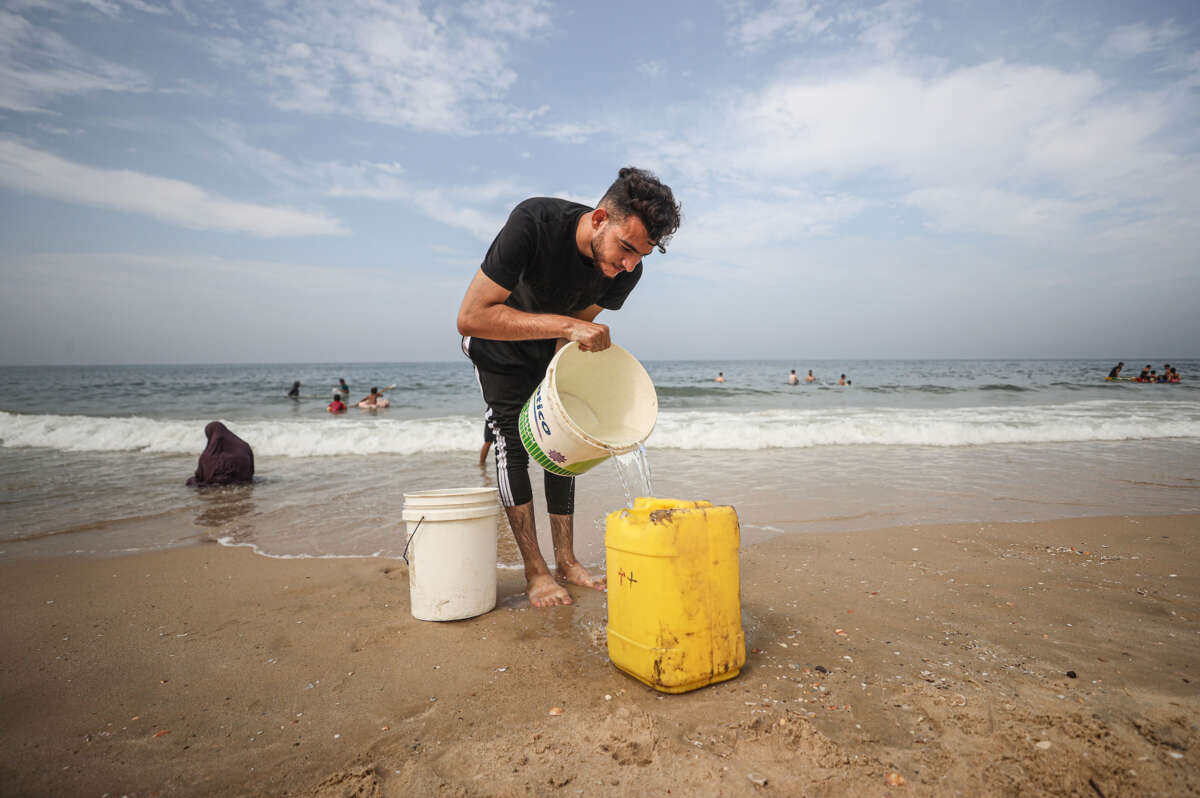An internal report by the U.S. State Department finds that tens of thousands of pregnant people and babies just months old are being forced to drink dirty water in Gaza, putting their health at risk as Israeli leaders block water and electricity from entering the area.
According to Haaretz, which viewed the report, State Department officials found that 52,000 pregnant people and over 30,000 babies under the age of six months old are drinking water that is either contaminated or brackish, meaning that it contains salt. The report relies on information from UN-affiliated organizations like the World Health Organization (WHO).
Drinking contaminated or brackish water is dangerous in any context, but especially for pregnant people and their fetuses and young babies, who are at heightened risk of infection, diseases and long-term health issues. These risks could be life-threatening.
It is also especially dangerous as the dirty water is likely the only source of water for many Gazans right now, with Israel having halted water, electricity, fuel and humanitarian aid to the area weeks ago with no sign of stopping its blockade.
The report recommends that the Biden administration urge Israel to restore water access to its original capacity plus two pipes, on top of the pipe that has already been running at the request of Biden officials, and allow enough fuel into the area for water to run through the region. The recommendations, Haaretz reports, hadn’t been accepted or rejected by the administration as of Friday.
According to a UNICEF report from October 17, water production in Gaza was only at 5 percent of its normal levels at that point; experts say that many in Gaza currently only have access to seawater mixed with sewage.
The water in Gaza is often contaminated with nitrates as a result of agricultural runoff. Nitrate contamination is well-known to cause a condition called blue baby syndrome, or infant methemoglobinemia, when mixed in infant formula, which can cause coma and death. Nitrates in drinking water can also cause premature birth, increasing a newborn’s need to go to the NICU as hospitals in Gaza are in danger of running out of power to keep NICU babies alive.
The State Department report says that the roughly 640,000 displaced people staying in shelters run by the UN Relief and Works Agency for Palestine Refugees in the Near East (UNRWA) only have access to about half a liter of water per person per day, or about 17 ounces. This is compared to the 15 liters of water recommended by the WHO at a minimum for human needs, and the 50 to 100 liters per person per day for basic needs and in case health issues arise.
The report comes as Gaza is facing outbreaks of communicable diseases like chickenpox and scabies, and pregnant people are already questioning how they will give birth or address pregnancy concerns without regular appointments. It also comes as Israel’s assault has killed more children in Gaza than the total number of children killed in global conflicts since 2019, according to Save the Children, with at least 3,324 children killed in Gaza and 36 children in the West Bank killed so far.
Our most important fundraising appeal of the year
December is the most critical time of year for Truthout, because our nonprofit news is funded almost entirely by individual donations from readers like you. So before you navigate away, we ask that you take just a second to support Truthout with a tax-deductible donation.
This year is a little different. We are up against a far-reaching, wide-scale attack on press freedom coming from the Trump administration. 2025 was a year of frightening censorship, news industry corporate consolidation, and worsening financial conditions for progressive nonprofits across the board.
We can only resist Trump’s agenda by cultivating a strong base of support. The right-wing mediasphere is funded comfortably by billionaire owners and venture capitalist philanthropists. At Truthout, we have you.
We’ve set an ambitious target for our year-end campaign — a goal of $205,000 to keep up our fight against authoritarianism in 2026. Please take a meaningful action in this fight: make a one-time or monthly donation to Truthout before December 31. If you have the means, please dig deep.
